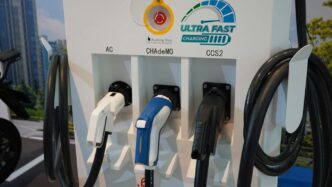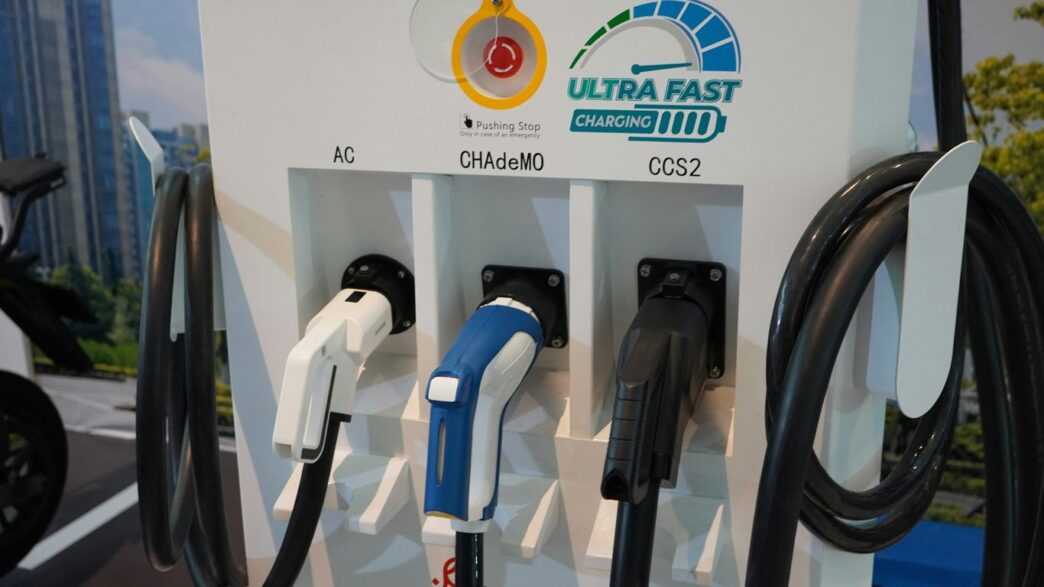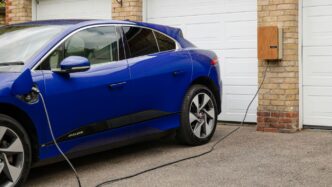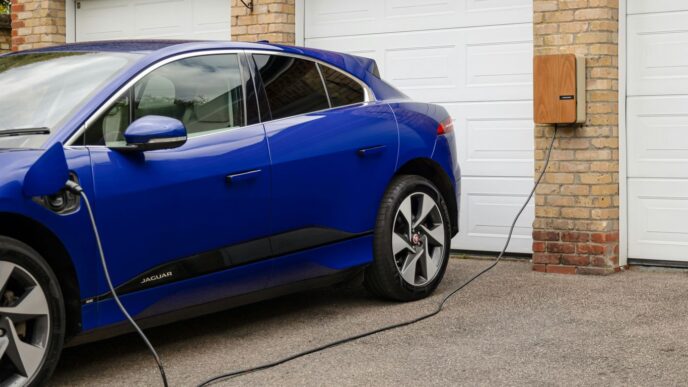Thinking about getting an electric car but worried about the price tag? You’re not alone. For a while, EVs seemed out of reach for many folks, but things are changing fast. Prices are coming down, especially for used models, and there are tons of ways to save money. Plus, let’s be real, saving on gas and maintenance adds up big time over the years. This guide is all about finding those electric cars that are cheap and actually work for your budget in 2025.
Key Takeaways
- New electric cars are getting cheaper, with battery costs dropping and more budget-friendly models hitting the market in 2025.
- Look into federal, state, and local incentives, as these can significantly reduce the upfront cost of buying an electric car.
- The used electric car market offers substantial savings, with older models and EVs with over 200 miles of range becoming more accessible.
- Leasing can be a cost-effective way to drive an electric car, especially when combined with available lease rebates.
- Always check battery health and warranty information when buying a used electric car, and consider certified pre-owned options for peace of mind.
Discovering Affordable Electric Cars
Thinking about going electric but worried about the price tag? You’re not alone. For a long time, electric cars felt like a luxury item, something out of reach for the average driver. But that’s really changing, and fast. The market in 2025 is looking way better for folks who want to save money while driving green.
The Cheapest New Electric Cars Available
It’s actually possible to find new electric cars that won’t make your wallet cry. The biggest factor driving down prices is the cost of batteries. As technology gets better and production ramps up, those battery packs are getting cheaper, and that savings gets passed on to us buyers. Plus, when you look at the total cost of ownership, including gas and maintenance savings, EVs often come out ahead over the years. It’s not just about the sticker price anymore; it’s about the long game. For example, the 2025 Hyundai IONIQ 6 SEL RWD has a decent range and a price that’s becoming more accessible, especially when you factor in potential savings Hyundai IONIQ 6.
Understanding EV Price Drops and Battery Costs
So, why are EVs getting cheaper? It’s mostly about batteries. Think of them as the heart of the electric car. For years, they were super expensive, making up a huge chunk of the car’s cost. But now, companies are making them more efficiently, using better materials, and producing them in larger quantities. This means the price per kilowatt-hour (kWh) of battery capacity is dropping. This trend is expected to continue, making EVs more competitive with gas cars right from the start. It’s a big deal because it opens up the EV world to more people.
Lifetime Savings: Fuel and Maintenance Benefits
This is where EVs really shine, especially for your budget. Let’s talk fuel. Electricity is generally cheaper per mile than gasoline, and prices tend to be more stable. Then there’s maintenance. Electric cars have far fewer moving parts than traditional cars. No oil changes, no exhaust systems to worry about, fewer brake replacements because of regenerative braking. Over the life of the car, these savings can add up to thousands of dollars. Some estimates suggest you could save between $6,000 and $10,000 or even more compared to a similar gasoline car. It’s a significant chunk of change that makes the initial purchase price seem much more reasonable.
Navigating EV Incentives and Rebates
Buying an electric car can feel like a big step, and figuring out the costs is a big part of that. Luckily, there are a bunch of ways to make EVs more affordable, especially with all the government help out there. It’s not just about the sticker price; these incentives can really bring down what you pay upfront and even help with leasing.
Federal Tax Credits for Electric Vehicles
The federal government offers a tax credit that can significantly lower the cost of buying a new electric vehicle. This credit is designed to encourage people to switch to cleaner transportation. The amount you can get depends on the vehicle’s battery capacity and where it’s manufactured. It’s important to check if the specific EV you’re interested in qualifies for this credit, as not all models do. You can usually find this information on the manufacturer’s website or through government resources. This credit is applied when you file your taxes, so it’s a direct reduction in what you owe the government.
State and Local EV Purchase Incentives
Beyond the federal help, many states and even local cities or counties have their own programs to make EVs cheaper. These can come in various forms:
- Rebates: Some states offer a direct cash rebate when you buy or lease an eligible EV. This is like getting money back right away.
- Tax Exemptions: You might be exempt from sales tax on your EV purchase in certain areas.
- Utility Company Programs: Local electric companies sometimes offer incentives, like discounts on home charging equipment or special electricity rates for EV owners.
These incentives can stack up, meaning you could potentially save thousands of dollars on top of the federal credit. It’s worth doing a bit of digging to see what’s available in your specific area. A quick search for "EV incentives [your state]" or "EV rebates [your city]" should point you in the right direction.
How to Find Applicable EV Rebates
Finding out which rebates and incentives apply to you and the car you want can seem a little tricky, but it’s totally doable. Here’s a simple way to approach it:
- Check the Vehicle’s Eligibility: First, make sure the electric car you’re looking at is on the list of qualifying vehicles for federal and state incentives. Manufacturers usually provide this information.
- Research Your Location: Use online tools or government websites to see what state, local, and even utility company incentives are available in your zip code. Some websites are set up specifically to help you find these deals based on your location and income.
- Understand the Application Process: Each incentive will have its own rules and paperwork. Some might be applied at the dealership, while others require you to submit an application after the purchase. Keep good records of your purchase and any required documents.
Don’t forget to look into incentives for used EVs too, as those programs are becoming more common and can make pre-owned electric cars even more budget-friendly.
Exploring Budget-Friendly New EV Models
Top 10 Least Expensive Electric Cars in 2025
Finding a new electric car that doesn’t cost a fortune is totally doable in 2025. The market has really opened up, and there are some genuinely affordable options out there. The price of EVs continues to drop as battery tech gets better and cheaper. Plus, remember that the sticker price isn’t the whole story; you’ll save a good chunk on gas and maintenance over time. It’s worth looking at the total cost, not just what you pay upfront.
Here’s a look at some of the most budget-friendly new EVs hitting the market:
| Vehicle Model | Range (miles) | MSRP ($) | Price per Mile ($/mile) |
|---|---|---|---|
| Nissan Leaf S FWD | 149 | 28,140 | 189 |
| Mini Cooper SE | 114 | 30,900 | 271 |
| Fiat 500e | 149 | 32,500 | 218 |
| Nissan Leaf SV Plus FWD | 212 | 36,190 | 171 |
| Hyundai Kona Electric SEL | 261 | 36,875 | 141 |
| Fisker Ocean Sport | 231 | 38,999 | 169 |
| Kia Niro Electric Wind | 253 | 39,600 | 157 |
| Nissan Ariya Venture+ FWD | 304 | 41,190 | 135 |
| Tesla Model 3 Long Range RWD | 363 | 42,490 | 117 |
| Hyundai Ioniq 6 SEL RWD | 342 | 42,700 | 125 |
Note: MSRPs shown do not include potential federal, state, or local incentives, which can significantly lower the final purchase price.
Nissan Leaf: The Most Affordable New EV
When you’re looking for the absolute cheapest new EV to drive off the lot in 2025, the Nissan Leaf often takes the crown. The base S FWD model starts at a very attractive price point. While its range might not be the longest at 149 miles, it’s perfectly adequate for most daily commutes and errands. It’s a practical choice for city driving and short trips, and with potential tax credits and rebates, the actual cost can be even lower. It’s been around for a while, so it’s a proven option in the EV space.
Nissan Ariya Venture+ FWD: Budget-Friendly Long Range
If you need a bit more range without completely blowing your budget, the Nissan Ariya Venture+ FWD is a strong contender. It offers a much more substantial 304 miles on a full charge, making it suitable for longer journeys and reducing range anxiety. While its starting MSRP is higher than the Leaf, it provides a significant upgrade in terms of range and often comes with more features. This model shows that you don’t have to sacrifice distance to find a reasonably priced EV. When you factor in incentives, this could be a really smart buy for someone who needs more miles between charges.
Finding Value in Used Electric Vehicles
So, you’re looking to go electric but don’t want to shell out for a brand-new model? Smart move. The used EV market is really starting to heat up, and honestly, you can find some pretty sweet deals if you know where to look. Buying used is a fantastic way to get into an electric car without the big initial hit. It’s not just about saving money upfront, either; these cars often come with lower running costs than their gasoline counterparts.
Economical Used EVs with Over 200-Mile Range
If you need a decent amount of range for your daily drives and maybe a weekend trip, there are solid options out there. Think about models like the Chevrolet Bolt EV or the Nissan Leaf. You can often find these with over 200 miles of range for around $20,000, sometimes even less depending on the year and condition. They’re practical, usually have enough space for most people’s needs, and are generally reliable.
Affordable Tesla Model 3 Options
Want a bit more tech and a longer range? The Tesla Model 3 is becoming a more accessible option on the used market. While still a bit pricier than a Bolt or Leaf, you can start finding used Model 3s in the $25,000 range. This gives you access to Tesla’s Supercharger network and their well-known performance. Keep an eye out for different battery sizes and configurations, as they affect both range and price.
Rock-Bottom Deals on Older EV Models
Don’t need a super long range or the latest features? You can find some really cheap used EVs, sometimes for $6,000 or even less. These are often older models, maybe with less range than newer cars, but they can be perfect for short commutes or as a second car. It’s important to be a bit more careful with these, though, as they might be out of warranty. Checking their condition and maintenance history becomes even more important here.
Here’s a quick look at what you might find:
| Vehicle Model | Typical Used Price (approx.) | Typical Range (miles) | Notes |
|---|---|---|---|
| Chevrolet Bolt EV | $15,000 – $20,000 | 200 – 238 | Good all-around value |
| Nissan Leaf | $12,000 – $18,000 | 150 – 212 | Reliable commuter |
| Tesla Model 3 | $25,000 – $30,000 | 220 – 350+ | Longer range, tech-focused |
| Older EVs (various) | Under $10,000 | Varies widely | Best for short trips, check condition well |
When you’re looking, remember to check sites like CarGurus, Edmunds, or even local listings. You might be surprised at what you can find!
Tips for Buying a Used Electric Car

So, you’re thinking about getting a used electric car? That’s a smart move if you’re trying to save some cash. But, like buying any used car, there are a few things you really need to check out before you hand over your money. It’s not just about the price tag; you want to make sure you’re getting a reliable ride.
First off, the battery is the heart of any EV, right? You’ll want to get a good idea of its health. Most cars will show you something on the dashboard about the battery’s condition, and sometimes, listings on sites like Edmunds will even include this info. Also, see if that battery is still under warranty. Many used EVs still have some warranty left on the battery pack, which is a huge relief. Don’t skip checking the battery’s warranty status.
Beyond the battery, think about the car’s history. Just like with a gas car, you want to know if it’s been in any accidents. Services like Carfax or AutoCheck can give you a vehicle history report. It’s also a good idea to ask about its maintenance records. Were oil changes (wait, EVs don’t have oil changes!) or other scheduled services kept up with? Even though EVs have fewer moving parts than gas cars, regular check-ups are still important.
Here are a few more things to keep in mind:
- Battery Health Check: Ask for any diagnostic reports if possible. Some dealerships or mechanics specializing in EVs can perform a battery health test.
- Warranty Review: Beyond the battery, check if any other parts of the car are still covered under the manufacturer’s warranty.
- Vehicle History Report: Look for accident history, title issues (like salvage or flood damage), and the number of previous owners.
- Maintenance Records: See if the car has a history of regular servicing, even if it’s just software updates and tire rotations.
If you want extra peace of mind, consider looking into Certified Pre-Owned (CPO) EVs. These cars usually go through a thorough inspection and come with an extended warranty, though they often cost a bit more. It’s a trade-off, but for some buyers, that added security is well worth it. You can find some great used electric vehicles that fit the bill.
Leasing an Electric Vehicle for Less
Leasing an electric vehicle might be a smart way to get into an EV without the big upfront cost of buying. It’s kind of like renting a car long-term, but usually for a few years. This can be a great option if you like to switch cars often or if you’re not sure you want to commit to owning an EV forever. Plus, there are often special deals and incentives that make leasing even more attractive.
Qualifying for Lease Rebates and Refunds
Did you know that some of the incentives designed to get more EVs on the road can also apply to leases? It’s true! Depending on where you live, you might be able to get a rebate or a refund that significantly lowers your monthly payments or the total cost of your lease. For example, in California, there are state rebates that can put thousands of dollars back in your pocket, especially if you qualify as a low-income buyer. It’s definitely worth checking what’s available in your specific area. You can often find this information by looking up incentives based on your zip code.
Understanding Lease Mileage Limitations
This is a big one, and you really need to pay attention. When you lease a car, you agree to a certain number of miles you can drive each year. Exceeding this limit can get expensive, with hefty per-mile charges added at the end of your lease. So, before you sign anything, think about how much you typically drive. Do you have a long commute? Do you take a lot of road trips? If you drive a lot, a lease with a low mileage cap might not be the best fit, and you could end up paying more than you expected. It’s usually better to opt for a higher mileage allowance if you think you might go over, even if it bumps the monthly payment up a bit.
Finding EV Lease Deals
Finding a good lease deal takes a bit of searching, but the savings can be substantial. Many manufacturers and dealerships offer special lease programs, especially on models they want to move. Keep an eye out for "special lease offers" or "low monthly payment" deals. Sometimes, these deals are advertised with a low down payment or even no money down, which is fantastic for keeping your initial costs low. It’s also a good idea to compare offers from different dealerships and even different brands. You might be surprised at the variety of deals available, and a little comparison shopping can save you a good chunk of change over the life of the lease.
Test Driving and Charging Your EV
So, you’re thinking about an electric car, huh? That’s awesome. But before you sign on the dotted line, you’ve gotta get a feel for what driving one is actually like. And then there’s the whole charging thing – it’s different from just pulling into a gas station.
Experiencing EVs Through Peer-to-Peer Rentals
This is where things get interesting. Forget just looking at them on the lot. You can actually borrow someone else’s EV for a day, a weekend, or even a whole week through services like Turo. It’s a fantastic way to see if an EV fits your daily routine without any pressure. You get to drive it on your own roads, see how it handles your commute, and figure out if you actually like the way it feels. It’s like a test drive that lasts long enough to really get to know the car.
Home Charging Options for Electric Cars
Okay, charging. The easiest way? Plug it in at home overnight. Most EVs can get a decent amount of range from a regular 110-volt outlet – think 40 to 60 miles added while you sleep. That’s usually plenty for most people’s daily driving needs. If you want to charge faster, you can get a 240-volt outlet installed, which is similar to what your electric dryer uses. That’ll get you a full charge much quicker.
Here’s a quick look at home charging:
- Level 1 Charging: Uses a standard 110-volt household outlet. Slow but convenient for overnight top-ups.
- Level 2 Charging: Requires a 240-volt outlet (like for an electric dryer). Much faster, often fully charging an EV overnight.
- Installation: You might need an electrician to install a Level 2 charger, but it’s usually a straightforward job.
Locating Public EV Charging Stations
What if you need a charge on the go, or you don’t have a place to plug in at home? No worries, there are public charging stations everywhere now. You can find them using apps on your phone or your car’s navigation system. They come in different speeds, too. Some are super-fast, giving you a good chunk of range in under an hour, while others are slower, more like a trickle charge while you’re parked for a while.
When you’re out and about, keep these points in mind for public charging:
- Charging Networks: Different companies operate charging stations (like Electrify America, ChargePoint, EVgo). You might need an app or a membership card for some.
- Charging Speeds: Look for DC fast chargers (Level 3) if you need a quick boost. Level 2 chargers are good for longer stops, like while you’re shopping or at work.
- Cost: Prices vary. Some stations charge by the minute, others by the kilowatt-hour (kWh), and some might even be free. Always check the pricing before you plug in.
Wrapping It Up
So, it looks like getting into an electric car doesn’t have to cost a fortune anymore. With prices dropping and more options hitting the market all the time, finding an affordable EV in 2025 is totally doable. Whether you’re eyeing a brand-new Nissan Leaf or hunting for a solid used deal, doing a little homework goes a long way. Think about what you really need – how far you drive, what features matter – and then check out all the incentives out there. Seriously, those savings can add up fast. Plus, every electric car on the road is a win for cleaner air. Thanks for reading, and happy EV hunting!
Frequently Asked Questions
Are electric cars really cheaper in the long run?
Yes, electric cars can save you money over time! While they might cost more to buy upfront, you’ll spend less on gas and maintenance. Think of it like this: electricity is usually cheaper than gasoline, and EVs have fewer moving parts, meaning fewer repairs. Over the life of the car, these savings can add up to thousands of dollars.
How can I lower the cost of buying an electric car?
There are a few ways to make EVs more affordable. The government offers tax credits that can reduce the price of a new EV. Many states and cities also have their own special discounts or rebates. Don’t forget to check if you qualify for any of these – they can make a big difference!
Are used electric cars a good deal?
Definitely! The used EV market is growing, and you can find some great deals, especially on older models or those with a bit less range. Many used EVs can be found for under $10,000. Just be sure to check the battery’s condition and warranty, and look into the car’s history to make sure it’s been well taken care of.
What should I look for when buying a used EV?
When buying a used EV, pay close attention to the battery’s health. You can often find this information on the car’s dashboard or in its listing. Also, see if the battery is still under warranty. Checking the vehicle’s history report for accidents and past maintenance is important too, just like with any used car.
Is leasing an electric car a good option?
Leasing can be a good way to drive an EV for less, especially if you don’t drive a lot of miles. Some lease deals even qualify for special rebates that can lower your monthly payments. Just be sure to understand the mileage limits so you don’t end up paying extra fees.
How do I charge an electric car at home?
Charging at home is super convenient! You can plug your EV into a regular household outlet (like the one you use for your phone charger), and it will add about 40-60 miles of range overnight. If you need to charge faster, you can install a special home charger, which is like a faster version of your home outlet.














